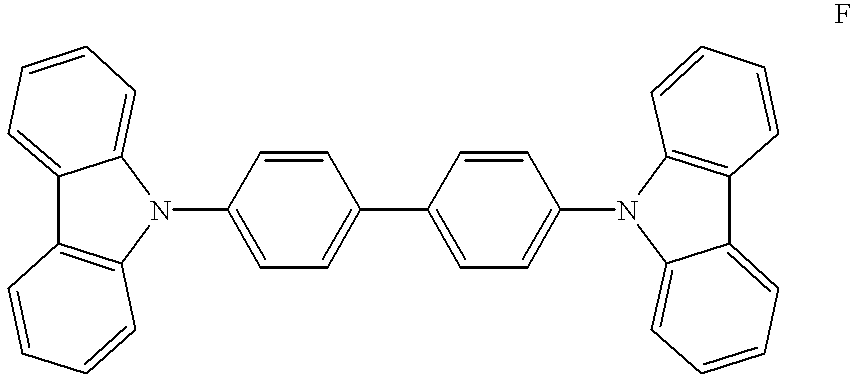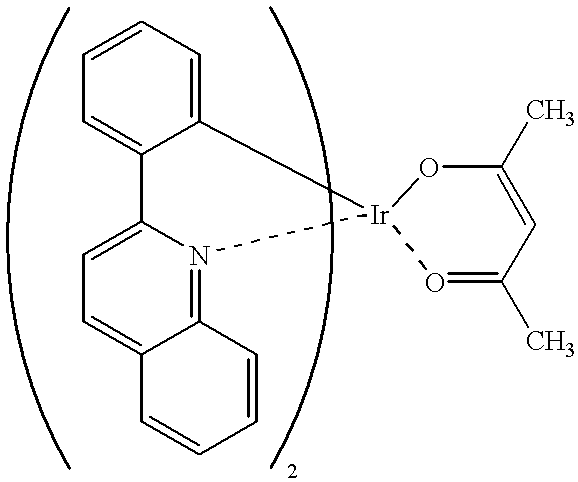Method for selecting combination of host material and light-emitting material, and organic light-emitting device using combination selected thereby
a technology of light-emitting devices and host materials, which is applied in the manufacture of electrode systems, electric discharge tubes/lamps, and discharge tubes luminescnet screens, etc., can solve the problems of poor light-emitting efficiency, and inability to meet the requirements of us
- Summary
- Abstract
- Description
- Claims
- Application Information
AI Technical Summary
Benefits of technology
Problems solved by technology
Method used
Image
Examples
example 1
A glass substrate of 2.5 cm.times.2.5 cm in size and 0.5 mm in thickness was washed with ultrasonic wave in isopropylalcohol. Then, PMMA acetone solution (5 weight %) was spin-coated on this washed glass substrate and dried, to provide an inert polymer layer. The spin-coating was carried out at 800 rpm for 20 seconds.
1 mg of light-emitting material I (tris(2-phenylpyridine)-iridium complex, Ir(ppy).sub.3) and 15 mg of host material A shown below were dissolved in 5 ml of dichloroethane. The resultant solution was spin-coated on the above-described inert polymer layer at 500 rpm for 20 seconds and dried to prepare a mixture film of IA. Further, these steps were repeated except for using each of host materials B to F shown below instead of the host material A, to prepare mixture films of IB to IF, respectively. Incidentally, for example, "IA" means the combination of the light-emitting material I and the host material A. ##STR1## ##STR2##
The mixture films of IA to IF were measured wit...
example 2
The combinations of the light-emitting material II shown below and each host material E and F, IIE and IIF were evaluated in the same manner as Example 1, respectively. The results were shown in Table 2.
As shown in Table 2, it was found by the method of the present invention that the host material F was suitably used in combination with the light-emitting material II.
As described in detail above, a preferred combination of a host material and a light-emitting material to be used for a light-emitting layer of an organic light-emitting device can be easily selected by a method of the present invention. Further, an organic light-emitting device exhibiting high light-emitting efficiency can be obtained by using the preferred combination of the host material and the light-emitting material selected by the method.
PUM
 Login to View More
Login to View More Abstract
Description
Claims
Application Information
 Login to View More
Login to View More - R&D Engineer
- R&D Manager
- IP Professional
- Industry Leading Data Capabilities
- Powerful AI technology
- Patent DNA Extraction
Browse by: Latest US Patents, China's latest patents, Technical Efficacy Thesaurus, Application Domain, Technology Topic, Popular Technical Reports.
© 2024 PatSnap. All rights reserved.Legal|Privacy policy|Modern Slavery Act Transparency Statement|Sitemap|About US| Contact US: help@patsnap.com










